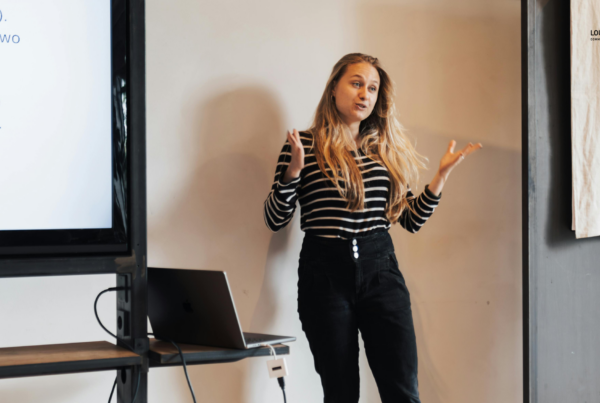Have you ever sat through a presentation that felt like it was going nowhere? You know the kind – where the speaker jumps between points, overloads you with information, and loses your attention halfway through.
Now, let’s be honest… have you ever given a presentation like that?
It’s okay – most of us have! The problem isn’t a lack of good information. It’s a lack of structure.
The best presentations aren’t just filled with great content; they’re designed to keep people engaged from start to finish. Here’s how to structure yours for maximum impact.
Step 1: Start with a Strong Hook (The First 30 Seconds Matter)
The first thing out of your mouth should not be:
“Hi everyone, today I’m going to talk about…”
Instead, grab attention right away. Try one of these:
✔️ A compelling question: “What if I told you that 90% of presentations fail to keep people’s attention – why is that?”
✔️ A surprising fact/stat: “Most people fear public speaking more than death. Let’s change that today.”
✔️ A short personal story: “Two years ago, I bombed a presentation. Here’s what I learned…”
Why does this work?
Because people decide within seconds if they’re going to pay attention. A strong hook makes them lean in.
Step 2: Clearly State Your Main Message (The ‘So What?’ Factor)
Once you’ve got their attention, get to the point.
Your audience is thinking: “Why should I care?” Make it clear.
✔️ State your core message in one simple sentence. Example:
“By the end of this presentation, you’ll have a step-by-step framework to structure any talk and keep your audience engaged.”
✔️ Give them a roadmap. Example:
“We’ll break this down into three parts: how to start strong, how to structure your content, and how to end with impact.”
This sets expectations and helps people follow along.
Step 3: Organise Your Content into Clear Sections (The Rule of 3)
If you overload people with too much information, they’ll remember nothing.
Instead, structure your content in three main points – because people process and remember things in patterns of three.
For example, when we give presentation skills training, we might structure it like this:
1️⃣ Hook: How to grab attention in the first 30 seconds
2️⃣ Content: How to organise your talk so it flows logically
3️⃣ Close: How to end in a way that leaves a lasting impact
This gives your audience a clear mental map to follow – so they stay engaged.
Step 4: Keep It Interactive (Because Nobody Wants to Be Talked At)
The fastest way to lose your audience? Make your talk a monologue.
People remember experiences more than words, so keep them engaged by:
✔️ Asking questions. Example: “Raise your hand if you’ve ever forgotten what to say mid-presentation.”
✔️ Using analogies or mini-stories. They make complex ideas easier to digest.
✔️ Including quick exercises. Example: “Take 30 seconds and write down one word that describes your biggest fear about public speaking.”
This keeps people involved and paying attention.
Step 5: End with Impact (Not Just ‘Thank You!’)
Too many presentations just fizzle out. Don’t let yours be one of them.
Instead, end with something memorable and action-driven:
✔️ A key takeaway: “If you remember one thing today, it’s this: structure your talk in a way that makes it easy to follow, and your audience will stay engaged.”
✔️ A call to action: “Before you leave, take one minute to outline the three main points of your next presentation.”
✔️ A powerful quote or final thought: “Great speakers aren’t born – they’re made. And today, you took a step toward becoming one.”
This ensures your audience walks away with value and direction.
Final Thought: Simple Structure, Big Impact
Great presentations don’t happen by accident. They’re crafted with structure and intention.
So next time you need to present, use this framework:
✅ Hook – Grab attention fast
✅ Message – Make it clear why they should care
✅ Structure – Use three key points for easy flow
✅ Interaction – Keep them engaged
✅ Close – End with impact
Do this, and your audience won’t just listen – they’ll remember.



